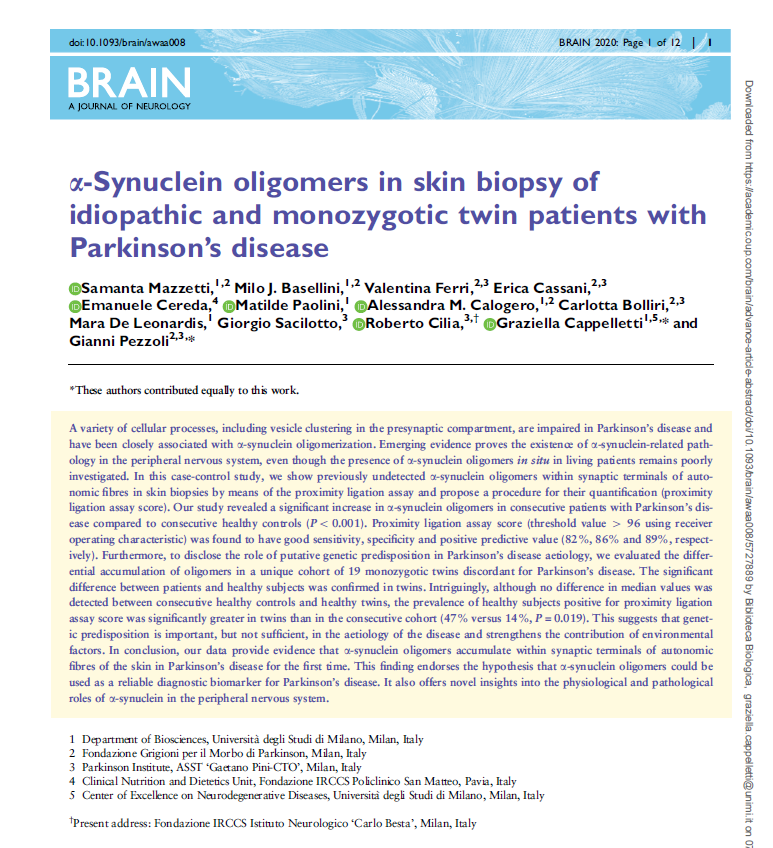Science News
a-Synuclein oligomers in skin biopsy of idiopathic and monozygotic twin patients with Parkinson’s disease
Mar 31, 2020 | News

A variety of cellular processes, including vesicle clustering in the presynaptic compartment, are impaired in Parkinson’s disease and
have been closely associated with a-synuclein oligomerization. Emerging evidence proves the existence of a-synuclein-related pathology in the peripheral nervous system, even though the presence of a-synuclein oligomers in situ in living patients remains poorly
investigated. In this case-control study, we show previously undetected a-synuclein oligomers within synaptic terminals of autonomic fibres in skin biopsies by means of the proximity ligation assay and propose a procedure for their quantification (proximity
ligation assay score). Our study revealed a significant increase in a-synuclein oligomers in consecutive patients with Parkinson’s disease compared to consecutive healthy controls (P50.001). Proximity ligation assay score (threshold value 4 96 using receiver
operating characteristic) was found to have good sensitivity, specificity and positive predictive value (82%, 86% and 89%, respectively). Furthermore, to disclose the role of putative genetic predisposition in Parkinson’s disease aetiology, we evaluated the differential accumulation of oligomers in a unique cohort of 19 monozygotic twins discordant for Parkinson’s disease. The significant
difference between patients and healthy subjects was confirmed in twins. Intriguingly, although no difference in median values was
detected between consecutive healthy controls and healthy twins, the prevalence of healthy subjects positive for proximity ligation
assay score was significantly greater in twins than in the consecutive cohort (47% versus 14%, P = 0.019). This suggests that genetic predisposition is important, but not sufficient, in the aetiology of the disease and strengthens the contribution of environmental
factors. In conclusion, our data provide evidence that a-synuclein oligomers accumulate within synaptic terminals of autonomic
fibres of the skin in Parkinson’s disease for the first time. This finding endorses the hypothesis that a-synuclein oligomers could be
used as a reliable diagnostic biomarker for Parkinson’s disease. It also offers novel insights into the physiological and pathological
roles of a-synuclein in the peripheral nervous system.
Written by tubinAD
